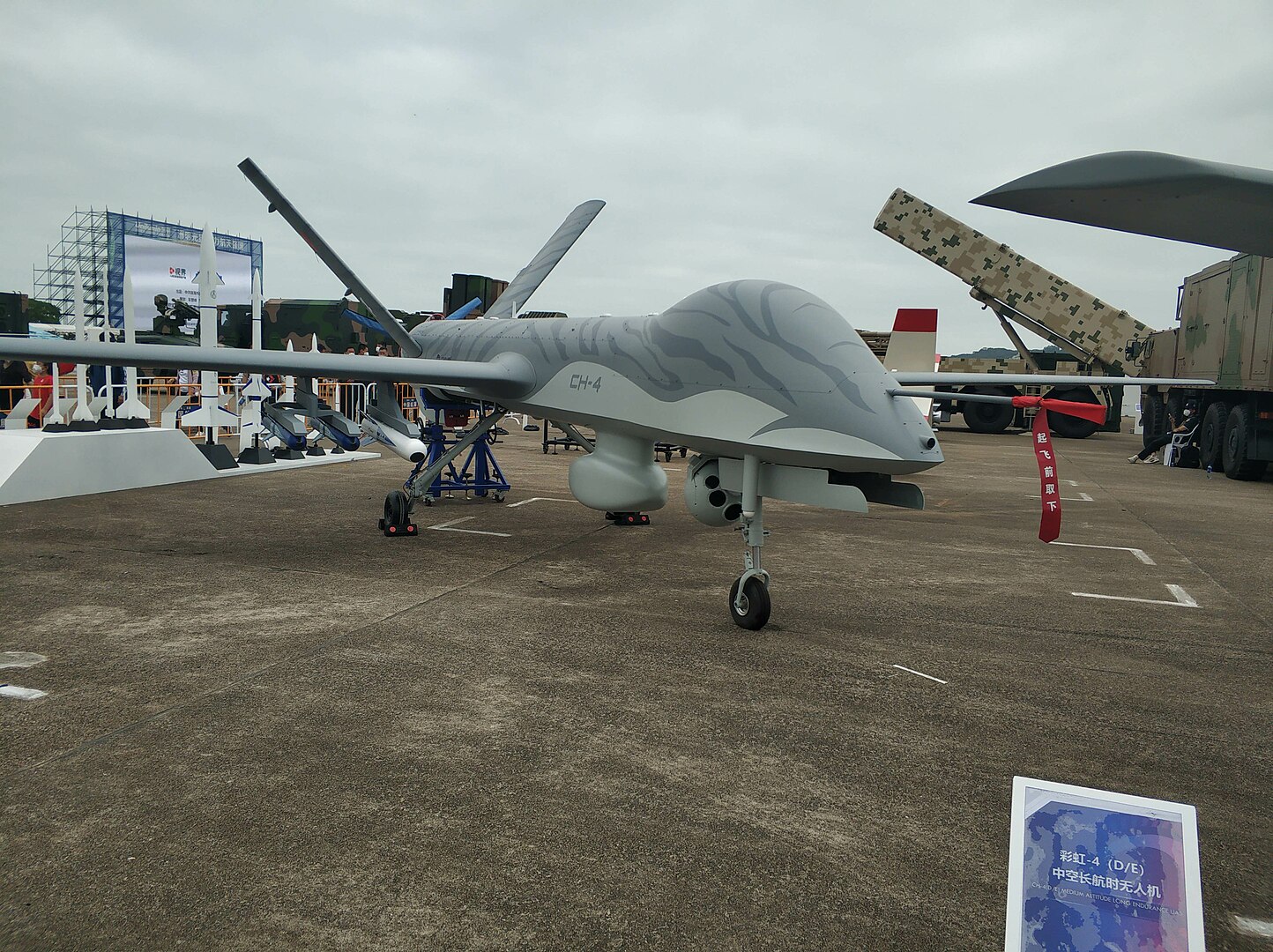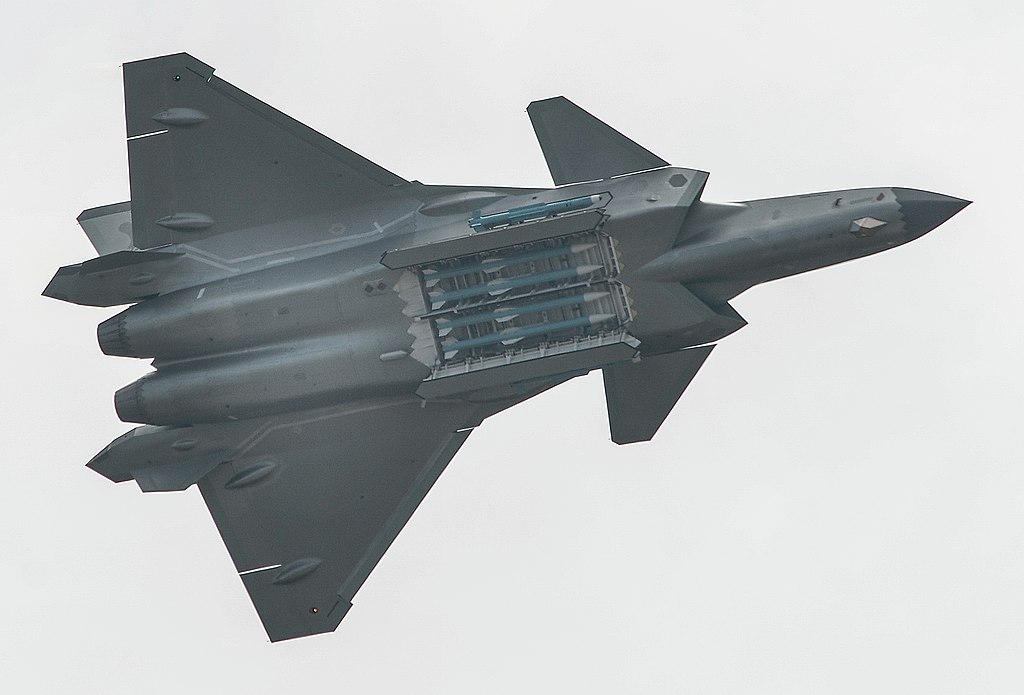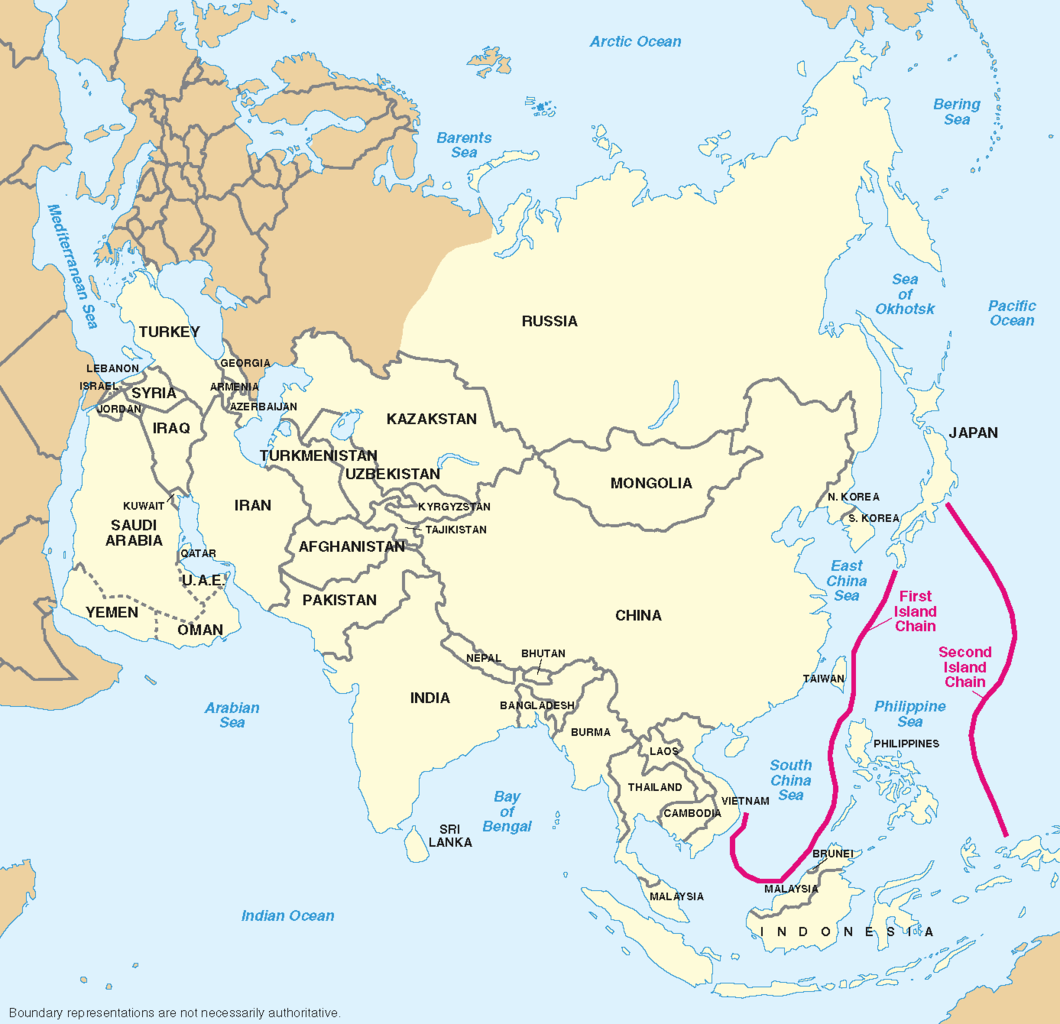
A China Caihong-4 drone at Airshow China Zhuhai in 2022.
“65 helicopters and drones, nearly 50 sets of flight simulators and special vehicle equipment and other large exhibits were on display.”
According to the first excerpted article from the Chinese government news outlet Tianjin Daily, on 14 September, the 6th China Helicopter Exposition displayed 65 helicopters and drones to over 350 firms at the Industry Base of the AVIC Helicopter in Tianjin.1 On 18 September 2023, according to the second article from China Daily, a Chinese government newspaper, officials confirmed that the People’s Liberation Army Ground Force (PLAGF) had unveiled their first armed reconnaissance drone, the KVD-002.2 The KVD-002 was displayed at the 6th China Helicopter Exposition.2 The CH-4 [RG1] , a predecessor to the KVD-002, is China’s best-selling unmanned combat aircraft. Prior to the KVD-002 release, the PLAGF did not have the capability for unmanned combat air reconnaissance. The KVD-002’s ability to provide up to 30 hours of air surveillance along with an air-to-ground strike package, adds additional capabilities to support China’s overseas expansion interests. The KVD-002 provides the PLAGF with battlefield and intelligence support to helicopter units, and guides attack helicopters to their target, increasing the PLAGF’s operational capability.2 Additionally, the KVD-002 could be utilized to support airborne early warning, control aircraft, and provide Command, Control, Communications, Computers, Intelligence, Surveillance, and Reconnaissance capabilities to ground forces.
Sources:
“第六届中国天津国际直升机博览会开幕 (The 6th China Tianjin International Helicopter Expo opens),” Tianjin Daily (Tianjin Municipal People’s Government news outlet), 15 September 2023. https://www.tj.gov.cn/sy/tjxw/202309/t20230915_6406971.html
“On September 14, the 6th China Tianjin International Helicopter Expo opened in Tianjin Airport Economic Zone. Municipal Party Committee Secretary Chen Min’er met with Hao Zhaoping, Deputy Secretary of the Party Leadership Group and General Manager of Aviation Industry Corporation of China, who came to Tianjin to attend the conference, and Lieutenant General Deng Zhiping of the Chinese People’s Liberation Army, and witnessed the cooperation between the Tianjin Municipal People’s Government and Aviation Industry Corporation of China. Signed a comprehensive strategic cooperation agreement.”
More than 350 companies from more than 20 countries and regions participated in the exhibition… 65 helicopters and drones, nearly 50 sets of flight simulators and special vehicle equipment and other large exhibits were on display. The audience is expected to exceed 60,000. During this period, more than 150 business negotiations and business activities will be held to build a platform for aviation companies to connect on-site and expand cooperation. “陆军推出战斗无人机 (Ground Force unveils combat drone),” China Daily (English language Chinese Communist Party newspaper), 18 September 2023. https://www.chinadaily.com.cn/a/202309/18/WS6507b43da310d2dce4bb644f.html
The People’s Liberation Army Ground Force has unveiled its first combat drone, a move observers said will strengthen the service’s operational capability. “The drone can cooperate with helicopters in combat operations. It can provide battlefield intelligence and fire support for the helicopter units, and can guide attack helicopters to their targets,” the introduction said, adding that the model can make short takeoffs and landings on a plateau.” The Ground Force did not disclose the KVD002’s developer. However, observers said that judged on its configuration and the AR-1 missile, the drone must have been designed based on the Caihong-4, or CH-4, China’s bestselling unmanned combat aircraft on the international market. The CH-4 is built by the China Academy of Aerospace Aerodynamics in Beijing, a subsidiary of China Aerospace Science and Technology Corp.
Image Information:
Image: A China Caihong-4 drone at Airshow China Zhuhai in 2022.
Source: https://en.wikipedia.org/wiki/CASC_Rainbow#/media/File:CH-4_at_Airshow_China_Zhuhai_2022.jpg
Attribution: CC BY-SA 4.0


